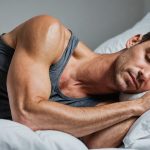The Importance of Video Feedback in Taekwondo Training
Incorporating video feedback into Taekwondo training is increasingly becoming a vital tool for athletes seeking to enhance their skills. This method allows practitioners to engage in performance analysis by reviewing past training sessions, thus providing a clearer understanding of their current abilities and areas for improvement.
Visual learning, especially through video feedback, significantly impacts skill development and technique refinement. By observing their movements, athletes can catch mistakes they might not feel or recognize during live action. This form of feedback offers the opportunity for immediate correction and fosters self-awareness, making it easier for practitioners to internalize proper techniques.
Have you seen this : Key Components of an Effective Warm-Up Routine for UK Wrestlers: Essential Tips for Peak Performance
Studies suggest several evidence-based benefits of video analysis in athletic performance. Firstly, it serves as a comparative tool, enabling athletes to benchmark their progress over time. Secondly, it offers a concrete visual dataset for coaches to analyze and guide athletes accurately. Lastly, video feedback helps build strategy by allowing athletes to study and anticipate opponents’ moves, thus enhancing their tactical planning.
Harnessing the potential of video feedback in Taekwondo training facilitates a more informed and strategic approach to mastering this martial art, laying emphasis on not just physical capability but also mental preparedness for competitions.
Also read : Ultimate Relaxation Strategies for Combat Sports Athletes in the UK After Competition
Effective Video Recording Techniques
Creating effective training videos is crucial for any coach, especially in dynamic sports like Taekwondo. Adopting the right recording techniques can significantly enhance the quality of your instructional content.
Optimal Camera Angles
In order to capture the full range of Taekwondo techniques, using multiple camera angles is essential. Position one camera at eye level to provide a clear view of the instructor’s movements, which allows the viewer to follow along with ease. Another camera should be placed at a lower angle to emphasize footwork and stances, crucial elements in Taekwondo training. For a comprehensive view, consider an overhead angle to capture more complex movements like jumps and spins. These varied perspectives ensure a comprehensive understanding of the techniques being taught.
Equipment Recommendations
To achieve professional-quality videos, investing in reliable equipment is advisable. A high-definition camera with good low-light performance is ideal for indoor shoots. Additional lighting can be employed to eliminate shadows and enhance visibility. Opt for microphones that can clearly capture audio instructions, minimizing background noise. A tripod will ensure steady shots, essential for instructional content. Together, these tools will significantly enhance your video production quality.
Recording Best Practices
Consistency in video quality is vital. Ensure your filming environment is clear of distractions and well-lit. Maintain a steady recording setup to avoid shaky footage, which detracts from the learning experience. Regularly check your equipment before each session to avoid technical difficulties. Use these methods to ensure your Taekwondo coaching videos are both informative and engaging.
Analyzing Movements for Improvement
When it comes to enhancing athletic performance through movement analysis, there are several effective techniques that can be employed. Video footage provides a critical visual aid, allowing athletes and coaches to identify and assess key areas for improvement. One method involves capturing movements from different angles. This comprehensive view aids in spotting inconsistencies or errors in the athlete’s technique that might be overlooked in real-time observation.
A pivotal aspect of performance enhancement includes feedback integration. Once the footage is carefully examined, constructive feedback can be provided. This feedback can be delivered through visual highlights on the video or written notes pinpointing specific faults and how they might be adjusted. Integrating this feedback into practice regimes can lead to noticeable improvements over time.
For a more detailed inspection, slow-motion and frame-by-frame analysis stand out as invaluable tools. These methods allow coaches and athletes to dissect every tiny movement, ensuring no crucial detail goes unnoticed. Whether it’s a runner’s stride or a gymnast’s landing, examining each frame individually can reveal subtle nuances that are instrumental in refining technique.
By leveraging these techniques, athletes can systematically address weaknesses, ultimately leading to superior performance outcomes.
Integrating Video Feedback into Training Sessions
Incorporating feedback integration into training sessions can significantly enhance performance and effectiveness. By systematically including video analysis, coaches can employ innovative coaching strategies that contribute to skill improvement and refined techniques.
Structured Feedback Sessions
Structured feedback sessions are pivotal in optimizing training quality. By organising regular reviews using video footage, athletes gain visual insight into their performance, aiding in the identification of strengths and areas for improvement. This structured approach allows for clear communication between trainers and athletes, fostering a deeper understanding of tactical and technical adjustments required.
Adjustment of Training Routines
Feedback integration facilitates the adjustment of training routines effectively. Video analysis results in precise feedback, enabling coaches to tailor drills to target specific weaknesses or enhance particular skills. This personalisation enhances the overall training efficacy, ensuring that routines remain adaptable and responsive to ongoing assessments.
Creating Feedback Loops
Creating sustainable feedback loops establishes an ongoing cycle of performance evaluation and improvement. Methodologies incorporating video review position both athletes and coaches to continually assess and refine training approaches. Key strategies include adjusting practices based on insights gained, ensuring that drills remain engaging and directly aligned with performance goals, while also promoting a culture of continuous growth and learning.
Success Stories of Video Feedback Implementation
When examining video success stories in Taekwondo, numerous UK clubs demonstrate enhanced coaching techniques and athlete performance through video feedback. Implementing this technology has provided coaches the opportunity to review movements in detail, allowing for precise corrections and tailored training plans.
A notable example involves a Taekwondo club in London. Coaches observed marked improvements in athletes’ kicking accuracy and speed after incorporating video feedback into routine practice. By analysing recordings, athletes discovered mechanical flaws previously unnoticed, leading to targeted adjustments and, ultimately, better performance in competitions.
Case studies reveal more than just improvements in skills. Clinics report an uptick in athletes’ confidence, boosted by clear visual evidence of their progress. Such powerful anecdotal evidence bolsters the argument for routine use of video analysis.
Several lessons learned emerge from these implementations. Firstly, it is important to integrate the video review seamlessly into the training session to avoid disrupting the rhythm. Secondly, coaches stress the need for clarity and focus during feedback sessions, ensuring athletes understand the points highlighted.
Clubs emphasise adaptability when applying video analysis in varied training environments. Whether using basic phones or intricate camera systems, the focus remains on extracting detailed insights, cementing video as a transformative tool in modern Taekwondo coaching.
Tools and Resources for Video Feedback
Delving into the world of video analysis tools can dramatically enhance Taekwondo training. Whether you are an athlete seeking improvement or a coach refining techniques, understanding the benefit of technology in training is crucial.
Recommended Software and Apps
Unlock new potential with software and apps designed for video feedback. Opt for easy-to-use platforms that capture, analyse, and offer detailed insights into techniques and performance. Essential features to look for include slow-motion replay, drawing tools, and comparison capabilities. This can enable athletes to dissect their movements and refine tactics with precision.
Online Resources for Coaches
Coaches, embrace the digital age by exploring online Taekwondo resources. Access tutorials, webinars, and forums dedicated to leveraging video for enhanced training sessions. These resources support coaches in maximising video utility, tailoring approaches to individual or group needs, and enhancing overall performance through visual coaching.
Community Platforms for Sharing Insights
Engage with community platforms that encourage sharing insights and experiences. These space offers diversity in perspective, allowing athletes and coaches to exchange strategies, feedback, and success stories. Interaction here promotes a deeper understanding of technology in training, tapping into collective expertise to elevate learning experiences and foster growth in the Taekwondo realm.






